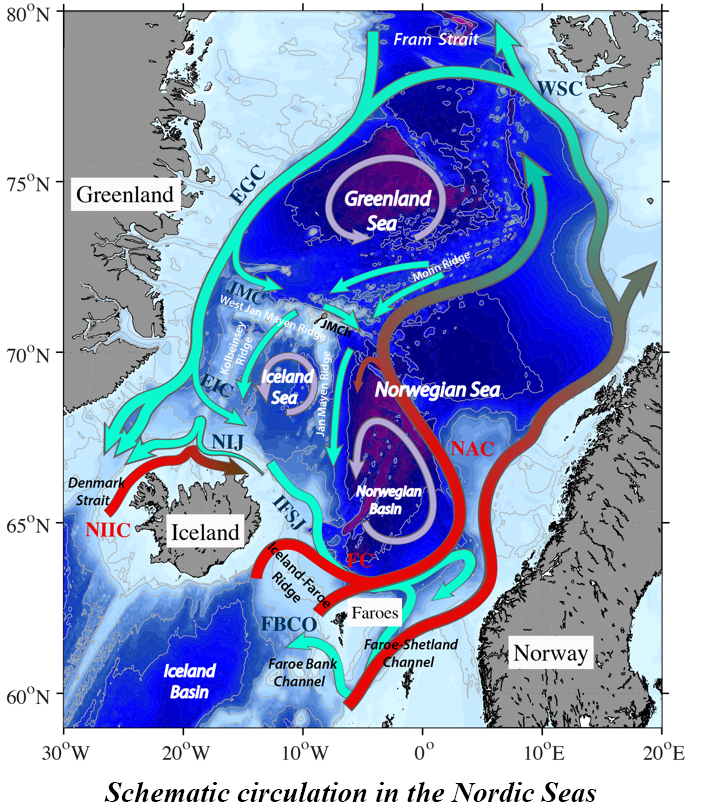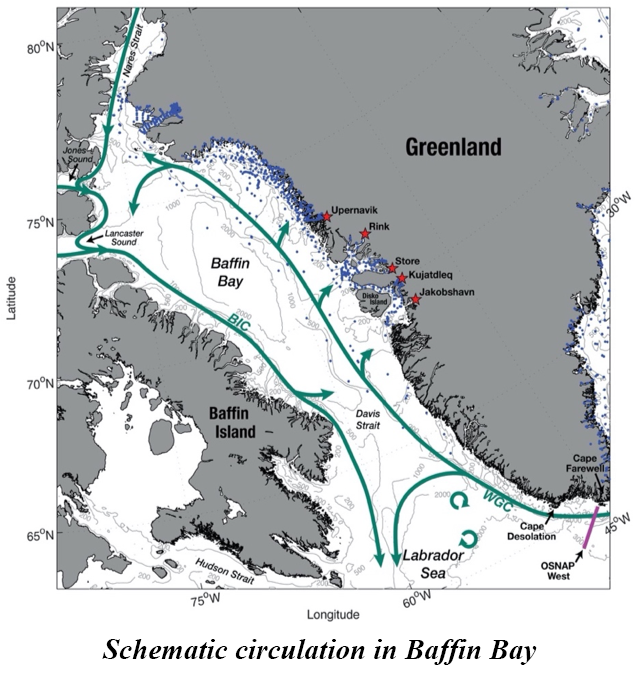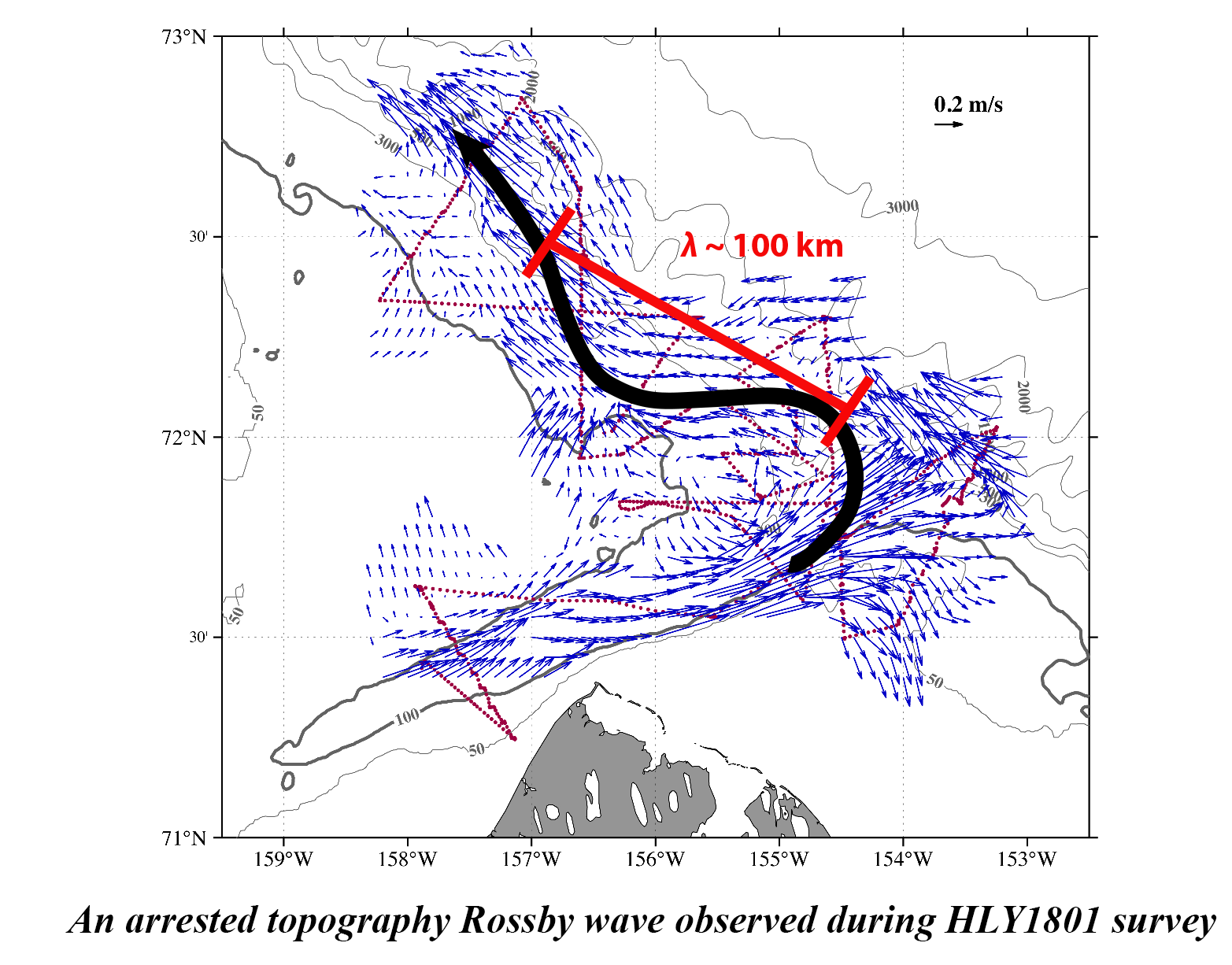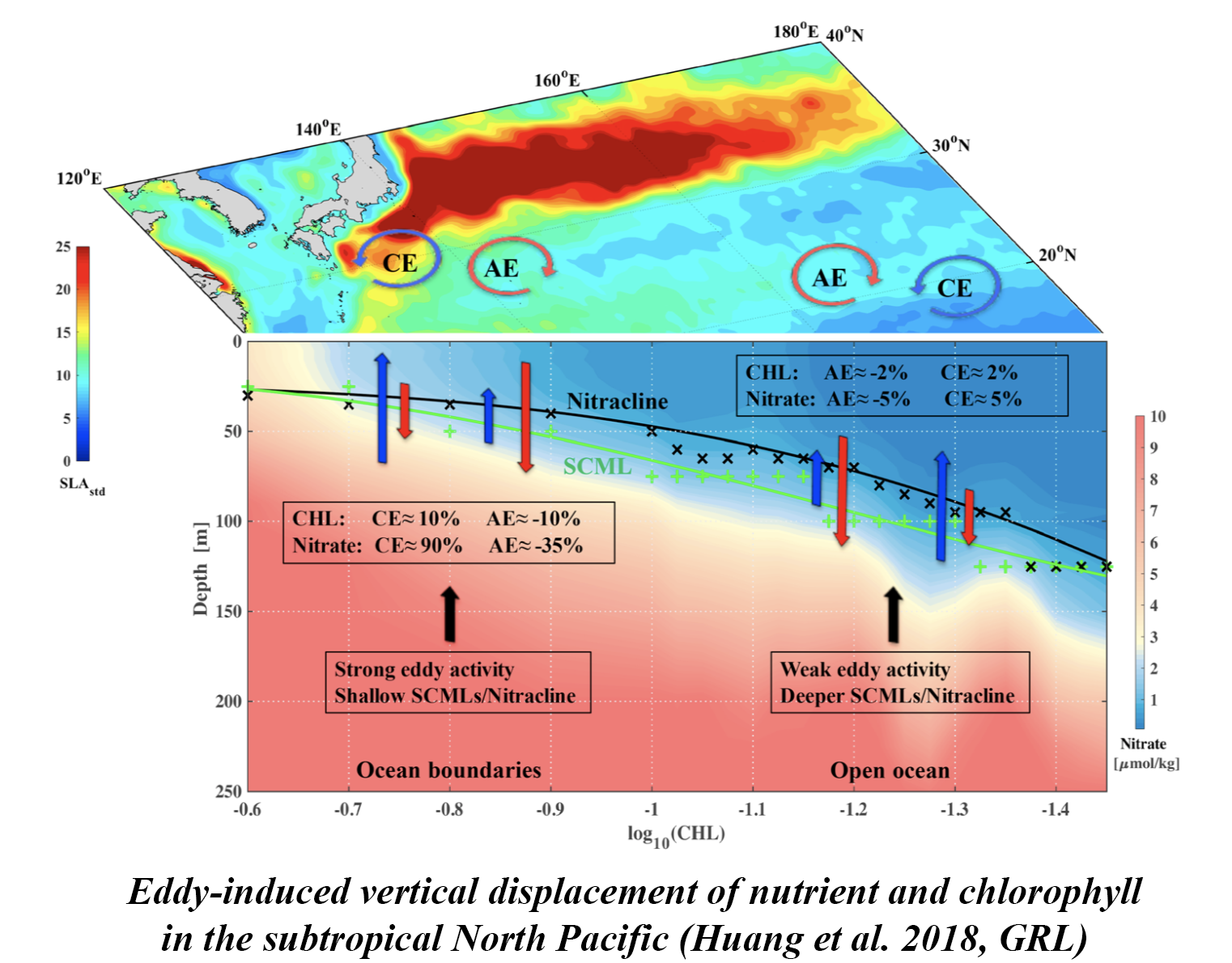Overturning in the Nordic Seas
The overturning in the Nordic Seas plays a critical role for the North Atlantic ocean and climate system. Warm, saline Atlantic waters flow northward, release heat to the atmosphere, and the newly ventilated
dense waters sink, return southward, and enter the North Atlantic as overflow plumes. Oceanographers have been aware of this process for nearly a century, however, questions remains unclear as to the source
and pathways of dense water and how the overturning will respond to
the changing climate.
Related projects:
IGP: https://web.whoi.edu/all0118/
UFO: coming soon
Related Publications (first- or co-author):
Huang et al. (2019) JGR, https://doi.org/10.1029/2019JC015134.
Renfrew et al. (2019) BAMS, https://doi.org/10.1175/BAMS-D-18-0217.1.
Huang et al. (2020) NC, https://doi.org/10.1038/s41467-020-19050-y.
Spall et al. (2021) PIO, https://doi.org/10.1016/j.pocean.2021.102609.
Huang et al. (2021) JGR, https://doi.org/10.1029/2020JC016893.
Renfrew et al. (2023) QJRMS, https://doi.org/10.1002/qj.4418.
Huang et al. (2023) NC, https://www.nature.com/articles/s41467-023-35889-3.
Fate of freshwater and heat in Baffin Bay

The amount of freshwater in the Greenland boundary current system has been increasing substantially over the past two decades. However, there remains significant uncertainty regarding the ultimate fate of the freshwater as it flows along the western continental slope and shelf of Greenland. Beneath the surface freshwater layer, the resided warm and salty Atlantic water in the boundary current has been implicated in causing basal melt in Greenland’s glaciers. However, detailed measurements are lacking that kinematically connect the boundary source of warm water to the glacial fjords, and the relevant dynamics remain unexplored.
Based on an extensive hydrographic survey of Baffin Bay in fall 2021, together with a regional high resolution ocean model, we seek to investigate the wide range of issues raised above.
This project is ongoing, PIs: Dr. Robert Pickart and Dr. Michael Spall.
Variability of high latitude boundary current

I am interested in studying the structure and variability of boundary currents in the high latitude ocean, e.g., the North Icelandic Jet (NIJ) and the East Greenland Current (EGC) in the Nordic Seas, the Barrow Canyon Outflow in the Pacific Arctic, and the West Greenland Current (WGC) in the subpolar North Atlantic.
Related Publications (first- or co-author):
Huang et al. (2019) JGR, https://doi.org/10.1029/2019JC015134.
Huang et al. (2021) JGR, https://doi.org/10.1029/2020JC016893.
Huang et al. (2023) JGR, https://doi.org/10.1029/2023JC019640.
Huang et al. (2023), In prep.
Ocean physical-biological interaction

I am also interested in studying the interaction between ocean physical and biological processes, especially in the ocean mesoscale and submesoscale eddies.
Related Publications (first- or co-author):
Huang et al. (2017) JGR, https://doi.org/10.1002/2017JC012915.
Huang et al. (2018) GRL, https://doi.org/10.1029/2018GL078408.
Zhang et al. (2019) AOS,
https://doi.org/10.1007/s13131-019-1513-4.
Zhang et al. (2020) GBC, https://doi.org/10.1029/2020GB006551.
Zhou et al. (2021) LO,
https://doi.org/10.1002/lno.11895.